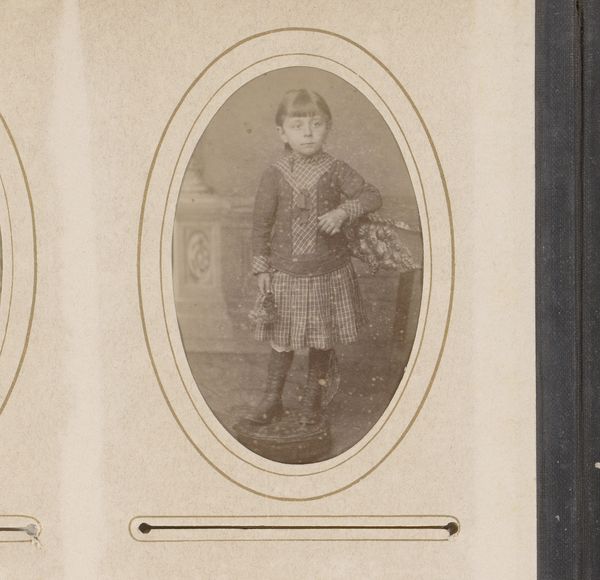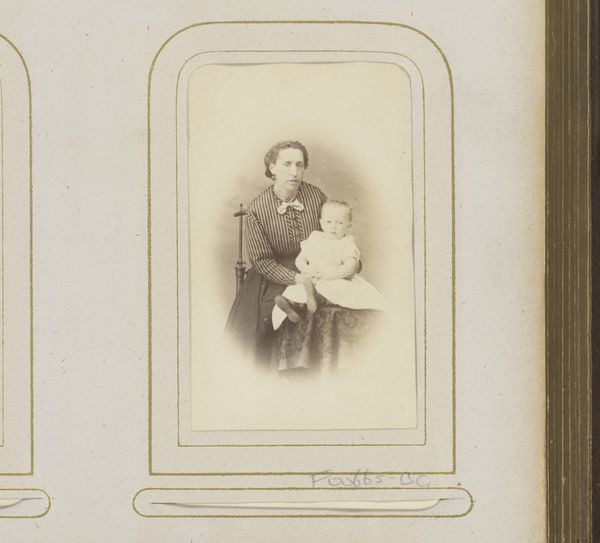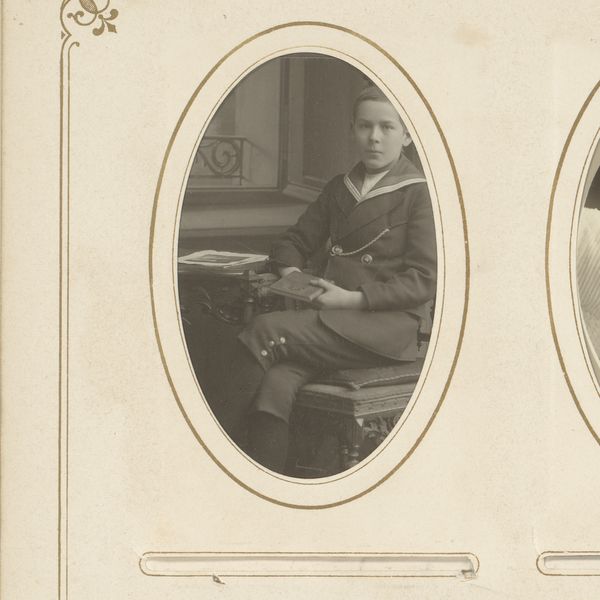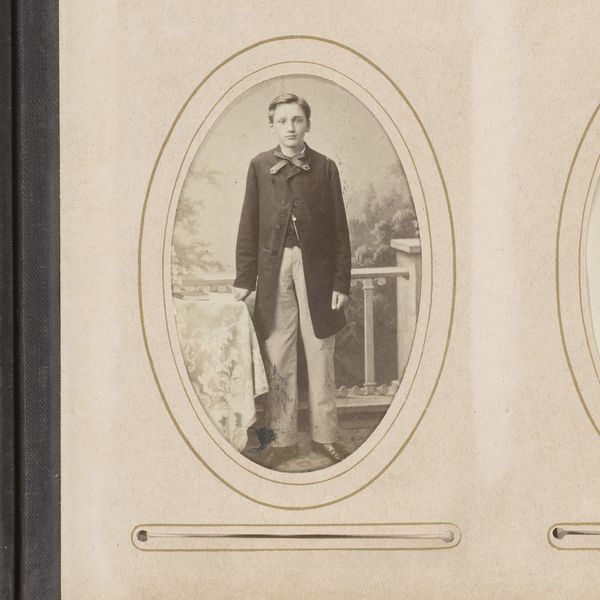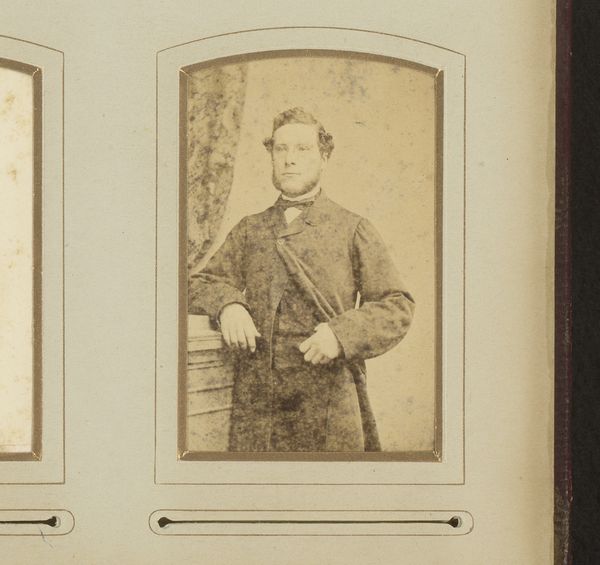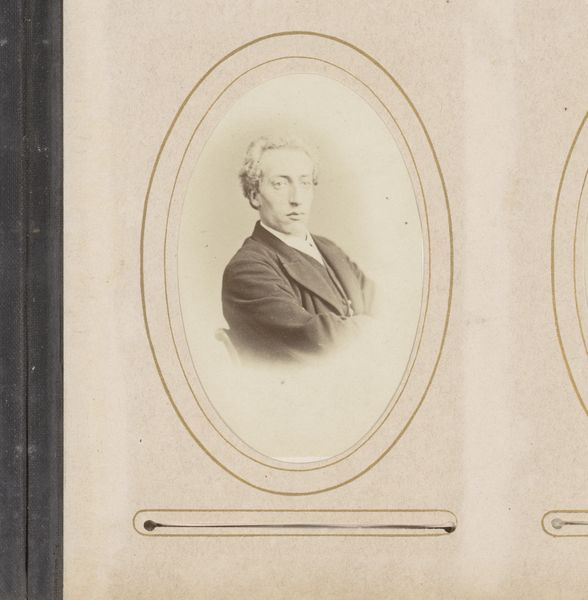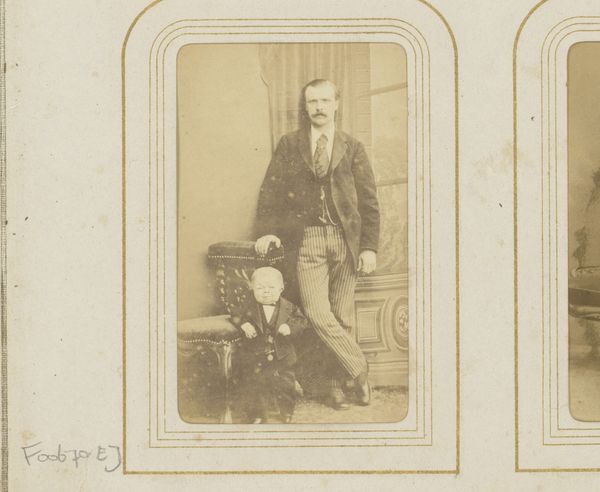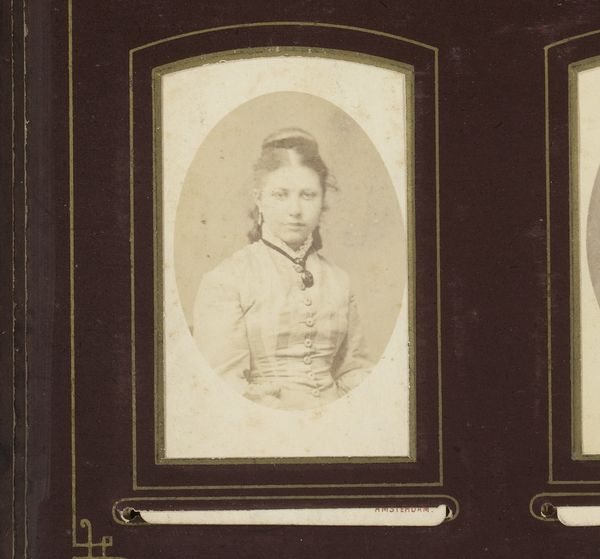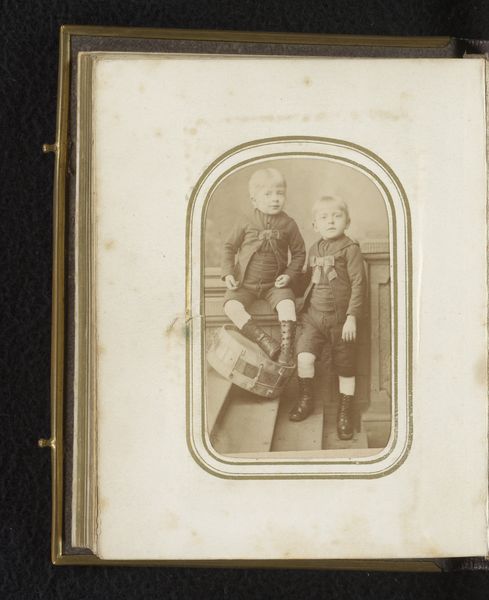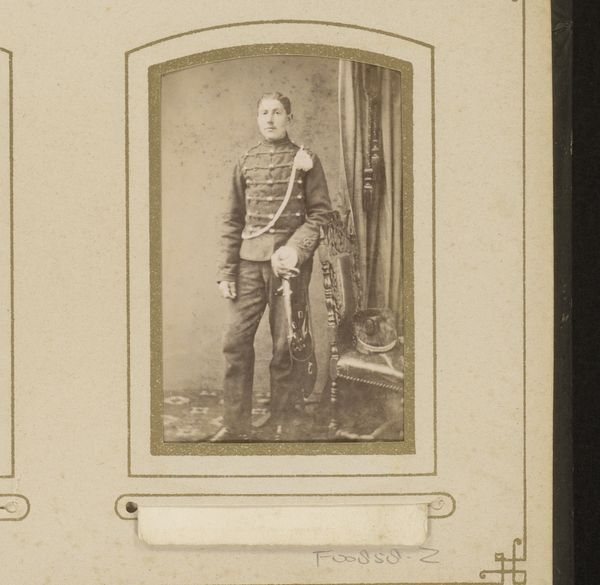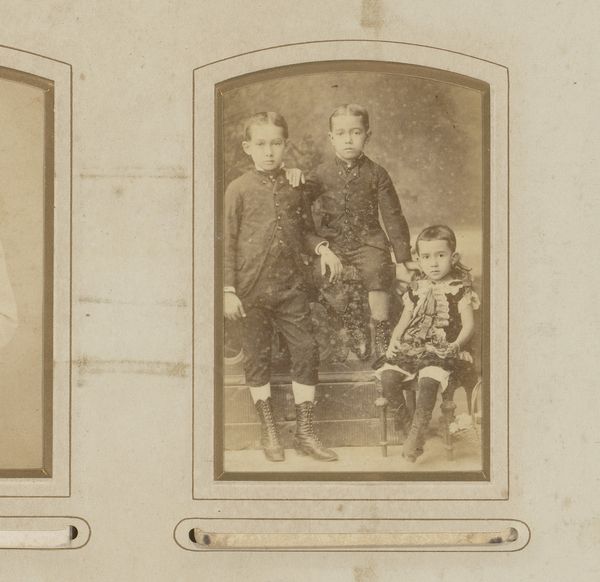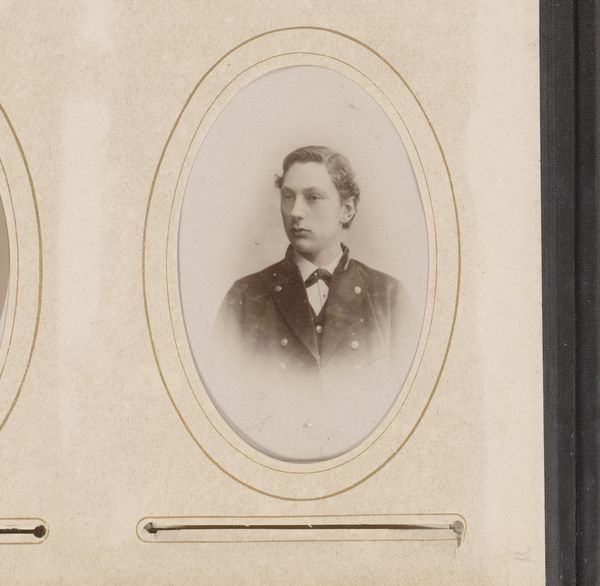
photography
#
portrait
#
aged paper
#
toned paper
#
16_19th-century
#
vintage
#
photo restoration
#
photography
#
historical photography
#
old-timey
#
19th century
#
golden font
#
historical font
#
columned text
Dimensions: height 83 mm, width 50 mm
Copyright: Rijks Museum: Open Domain
Curator: This captivating portrait, "Portret van een man in uniform met helm en zwaard," attributed to Sawyer's Italian Studios, offers us a glimpse into the photographic practices between 1860 and 1890. Editor: It possesses a remarkable somberness, doesn't it? The subdued tonal range focuses the gaze, highlighting the rigid posture of the man and the starkness of the sword. It conveys an overwhelming sense of formality. Curator: Indeed. Notice the meticulous attention to detail in the uniform’s braiding and buttons, contrasted against the blurred background, typical of photographic portraiture of this period. It serves to emphasize the subject's status. Editor: The helmet placed beside him seems laden with symbolism, though. Isn't it almost like an abandoned or superseded role? A transition implied by the angle of the sword and the determined forward-facing posture? Perhaps the helmet represents the mental or emotional fortitude one acquires while at war, which in this instance is discarded in favour of personal fortitude. Curator: That's an insightful reading. The object placed beside the uniformed figure is in conflict, whereas the structural elements here -- the careful lighting, the oval frame, the centered composition – reinforces a classic hierarchical structure, where symbols of power and identity are precisely arranged. Editor: But even with those careful formal elements, the muted colour palette imbues the piece with an overall tone of restraint, almost resignation. The sepia tone itself calls to mind the passage of time, and a reflection upon the subject’s existence, imbuing the work with a psychological dimension of self. The oval shape reinforces the past. Curator: I agree that the sepia tone undeniably adds to its vintage aura, transporting us to a specific era in photographic history. We see it reproduced in many contexts, to provide a 'historical' aspect. This aesthetic has become ingrained within us and this historical accuracy helps ground the themes expressed. Editor: It speaks volumes about the way we, as viewers, project meanings and emotions onto historical portraits. Curator: Absolutely, while formally constructed and aesthetically pleasing, photographs of this era act as conduits for reflecting the multifaceted nature of human identity and its cultural perception. Editor: An image suspended in time, laden with history and ready to be interpreted, even now.
Comments
No comments
Be the first to comment and join the conversation on the ultimate creative platform.
